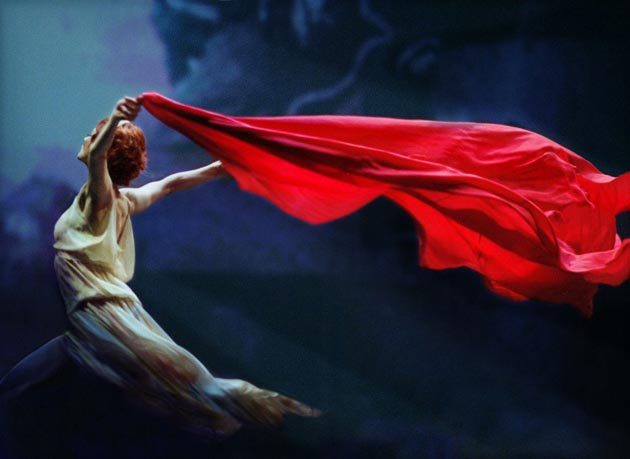Isadora/Dances at a Gathering, Royal Opera House, London
Isadora Duncan come across as more gold-digger than revolutionary in this reworked bio-ballet

No one loved a scandal like the Edwardians. And no one fed their appetite like Isa-dora Duncan, the American-born proponent of free love, skimpy Grecian dressing and unrestrained barefoot dance. The choreographer Kenneth MacMillan wasn't born when Duncan died in 1927 – suddenly, and bizarrely, of a broken neck when her scarf caught in the wheels of an admirer's open-top Bugatti – and she had been dead for half a century by the time he made Isadora, his two-act homage to Duncan's intrepid spirit. Yet still the spectre of sexual outrage hovered over it.
The failure of that 1981 production – which included film, experimental holograms, an actress on stage speaking Isadora's diary entries, as well as a string of dance encounters that spelled out her liaisons in lurid detail – has since been blamed on the notion that its ambition, much like its subject, was too far ahead of its time.
Now the Royal Ballet has had another go. Deborah MacMillan, the choreographer's widow, has guessed at what Sir Kenneth might have done, had today's technology been his to play with. The dance content has been halved, along with Richard Rodney Bennett's mainly pastiche score, and the actress is removed from the stage to deliver Duncan's words in voice-over (Nichola McAuliffe). More archive film has been added – much of it newly discovered, and fascinating, though sadly there is still no cinematic evidence of Duncan dancing.
That blank partly provides the ballet's raison d'être. Since no one knows what the dancing looked like, any imagined version has to be better than none. Yet the free-form frolicking of Tamara Rojo's Isadora in the opening scene, scooping up handfuls of air, kicking up imaginary spume against a cinematic rolling sea, gives few hints of the wild magic that we're told made Duncan revolutionary. It's not so different, either, from Frederick Ashton's earlier guesswork in Five Brahms Waltzes in the Manner of Isadora Duncan, a more succinct piece that ignored the torrid personal history.
In Isadora, that history intrudes soon enough, but not before amusing episodes filling in Duncan's early dance education, the setting up of her own school (whose students were dubbed the Isadorables) and her brief professional link-up with the Folies-Bergère artiste Loie Fuller, whose specialism was a dance with coloured light and whirling fabric – evidenced in a priceless clip of a Lumière brothers' film made in 1898. A live reconstruction of one of the pair's collaborations is well imagined.
The sex, when it hits the stage, at first in a rampant duet between Rojo and Ed Watson's stormingly virile Edward Gordon Craig, and later Gary Avis's dashing Paris Singer (the sewing-machine tycoon) is, if not decorous, inventive. Yet the stylised coitus lacks the steadily developing throb of similar moments in Romeo and Juliet and Manon.
Harder to stomach is the too-literal treatment of the accidental drownings of Duncan's children, as two limp little bodies are carried on stage, triggering an orgy of parental grief in a duet which draws on stricken postures from Picasso's Guernica (MacMillan's range of reference was always wide, if anachronistic).
It's just too heavy a tragedy for a bitty bio-drama to bear. Ditto the birth of the stillborn baby, not to mention the terminal episode in the sports car, dispatched with such graphic zest that it risks looking like a Laurel and Hardy gag.
In the end, sadly, despite a stops-out performance by Rojo, Duncan comes across not as a charismatic innovator so much as a muddle-headed gold-digger, whose self-dramatising pronouncements about "My Art" are more to be suffered than admired.
That the evening is salvaged, in its second half, by the terpsichorean rapture of Jerome Robbins's Dances at a Gathering is peculiarly apt. One of the things that shocked Duncan's early audiences was that she performed to pre-existing music (imagine!) and Robbins's 1969 settings of Chopin take the format to its expressive and joyously inventive limit. If only the pianist Philip Gammon had responded to the waltzes and mazurkas with the same fine, flexible nuance as the dancers, it would have been better still.
ROH (020-7304 4000), 18, 20 and 21 Mar
Join our commenting forum
Join thought-provoking conversations, follow other Independent readers and see their replies
Comments